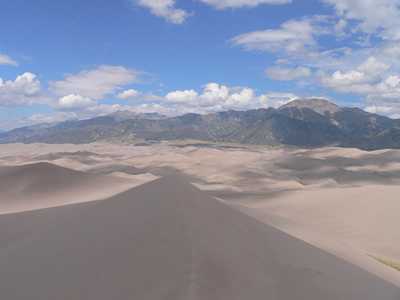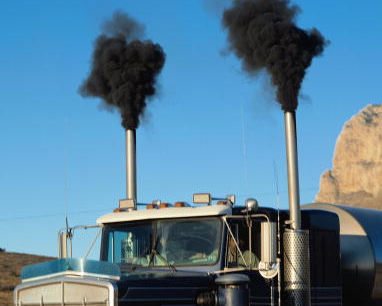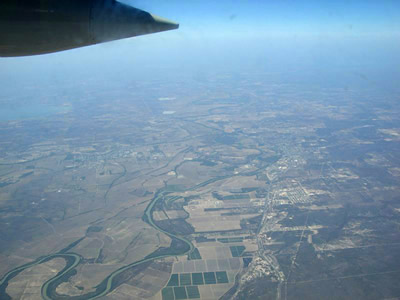Haze near Mexico City photographed from the NSF/NCAR C-130 aircraft in spring, 2006.
Click on image for full size
Image Courtesy of Peter DeCarlo
Aerosols in the Atmosphere: They Are the Same All Around the World
News story originally written on December 10, 2009
Scientists have been studying tiny particles in the air called aerosols. Aerosols can affect our climate, the amount of clouds in the sky, and the amount of rain that falls from clouds. Aerosols can also make people sick with illnesses like asthma.
Until recently, scientists didn't know what happens to the particles in the atmosphere, but now they understand that they form something like a "particle soup." As they learn more about the chemicals in this "soup" the scientists will be able to better predict how climate will change and what is happening with air quality.
You might also be interested in:

When you look up at the sky, you are looking at more than just air. There are also billions of tiny bits of solid and liquid floating in the air. These tiny particles are called aerosols or particulates.
...more
A cloud is composed of tiny water droplets or ice crystals. A series of things have to happen in order for these water droplets or ice crystals to form into clouds in the atmosphere, and different types
...more
Raindrops form when tiny water droplets collide together in clouds to form bigger ones. When they get too heavy, rain falls out of the clouds. Rain is more than 5mm in diameter. The types of clouds that
...more
Have you ever had a fire in your fireplace? Burning logs leaves a black powdery material behind called soot. Soot is also made when we burn coal, gas or oil for energy. Humans have been burning these
...more
Scientists have learned that Mount Hood, Oregon's tallest mountain, has erupted in the past due to the mixing of two different types of magma. Adam Kent, a geologist at Oregon State University, says this
...more
The Earth's mantle is a rocky, solid shell that is between the Earth's crust and the outer core. The mantle is made up of many different reservoirs that have different chemical compositions. Scientists
...more
Some faults look strong and like they wouldn’t cause an earthquake. But it turns out that they can slip and slide like weak faults causing earthquakes. Scientists have been looking at one of these faults
...more















